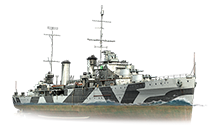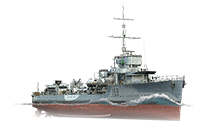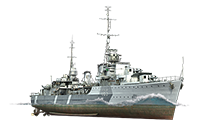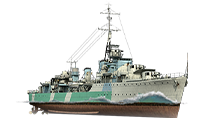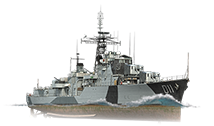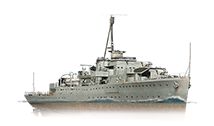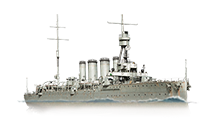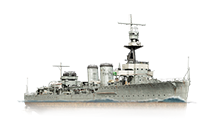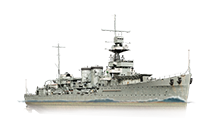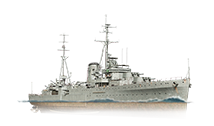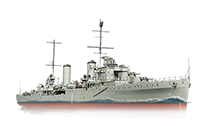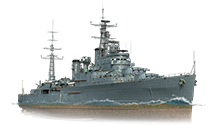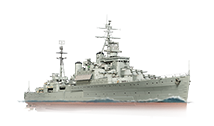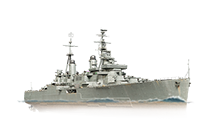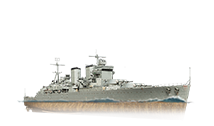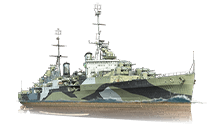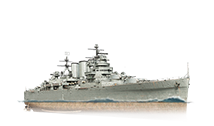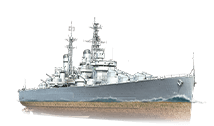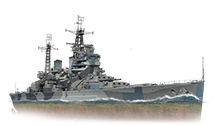Ships of Commonwealth

Several of the various nation-states that comprise the Commonwealth deploy their own military forces. Collectively, they are represented in World of Warships under a single flag, but each navy has its own history and traditions.
During the first years of the First World War, the RCN's six-vessel naval force patrolled both the North American west and east coasts to deter the German naval threat, with a seventh ship, HMCS Shearwater joining the force in 1915. Just before the end of the war in 1918, the Royal Canadian Naval Air Service was established with the purpose of carrying out anti-submarine operations; however, it was disbanded after the armistice of 11 November.
After the war, the Royal Canadian Navy took over certain responsibilities of the Department of Transport's Marine Service, and slowly started to build its fleet, with the first warships specifically designed for the RCN being commissioned in 1932. At the outbreak of the Second World War, the Navy had 11 combat vessels, 145 officers and 1,674 men. During the Second World War, the Royal Canadian Navy expanded significantly, ultimately gaining responsibility for the entire Northwest Atlantic theatre of war. By the end of the war, the RCN had become the fifth-largest navy in the world after the United States Navy, the Royal Navy, the Imperial Japanese Navy, and the Soviet Navy, with over 900 vessels and 375 combat ships. During the Battle of the Atlantic, the RCN sank 31 U-boats and sank or captured 42 enemy surface vessels, while successfully completing 25,343 merchant crossings. The Navy lost 24 ships and 1,797 sailors in the war.
In 1940–41, the Royal Canadian Navy Reserves scheme for training yacht club members developed the first central registry system.
From 1950 to 1955, during the Korean War, Canadian destroyers maintained a presence off the Korean peninsula, engaging in shore bombardments and maritime interdiction. During the Cold War, the Navy developed an anti-submarine capability to counter the growing Soviet naval threat. In the 1960s, the Royal Canadian Navy retired most of its Second World War vessels, and further developed its anti-submarine warfare capabilities by acquiring the Sikorsky CH-124 Sea King, and successfully pioneered the use of large maritime helicopters on small surface vessels. At that time, Canada was also operating an aircraft carrier, HMCS Bonaventure, flying the McDonnell F2H Banshee fighter jet until 1962, as well as various other anti-submarine aircraft.
The RAN served on the frontlines of World War I, supporting Australian landings in the invasion of the German New Guinea colonies and attacking the Ottoman Navy in the Sea of Marmora during the Gallipoli campaign. HMAS Sydney faced off alone against SMS Emden in the middle of the Indian Ocean and won — earning the RAN's first victory at sea — while HMAS Australia was later involved in the Battle of Jutland. After the war, the RAN — like most other navies around the world — was forced to make changes as a result of the Washington Naval Treaty of 1922. They had to scrap their only battlecruiser as a result of the treaty, but gained several pre-war submarines and destroyers.
During the inter-war period, older ships were sold for scrap while newer heavy cruisers, light cruisers, submarines, destroyers, and a seaplane carrier found their way into RAN service. Hampered by the inter-war disarmament policies due to shifting economic and political situations, the RAN rose once again to fight in World War II. Throughout 1940, the RAN distinguished itself in the Mediterranean with the famous destroyers of the "Scrap Iron Flotilla". RAN units returned to defend the Australian homeland when war broke out in the Pacific and enemy ships prowled Australian waters, fighting against the encroaching Empire of Japan as close to home as the Coral Sea.
Since the end of the Second World War, the Royal Australian Navy has served in operations from the Korean Theater to East Timor, focusing on protecting Australia’s interests in the southwestern Pacific region and peacekeeping around the globe with a 50-strong fleet of modern destroyers, frigates, submarines, and auxiliaries.
The "New Zealand Naval Forces" were formally organized as a part of the Naval Defence Act of 1913, and referred to as the New Zealand Division of the Royal Navy from 1921 onwards. The New Zealand Division was largely comprised of cruisers and lighter units, including HMS Leander, HMS Achilles, and a pair of Danae-class cruisers. With the outbreak of World War II in September 1939, New Zealand joined the rest of the British Empire in declaring war on Germany. Recognizing that the existing New Zealand Division was already largely independent and self-sufficient, King George VI christened it the Royal New Zealand Navy (RNZN) on 1 October 1941. The RNZN contributed ships and men in several key theaters of operations during the course of the war, seeing action — and suffering losses — in both the Atlantic and Pacific Oceans as well as the Mediterranean Sea.
